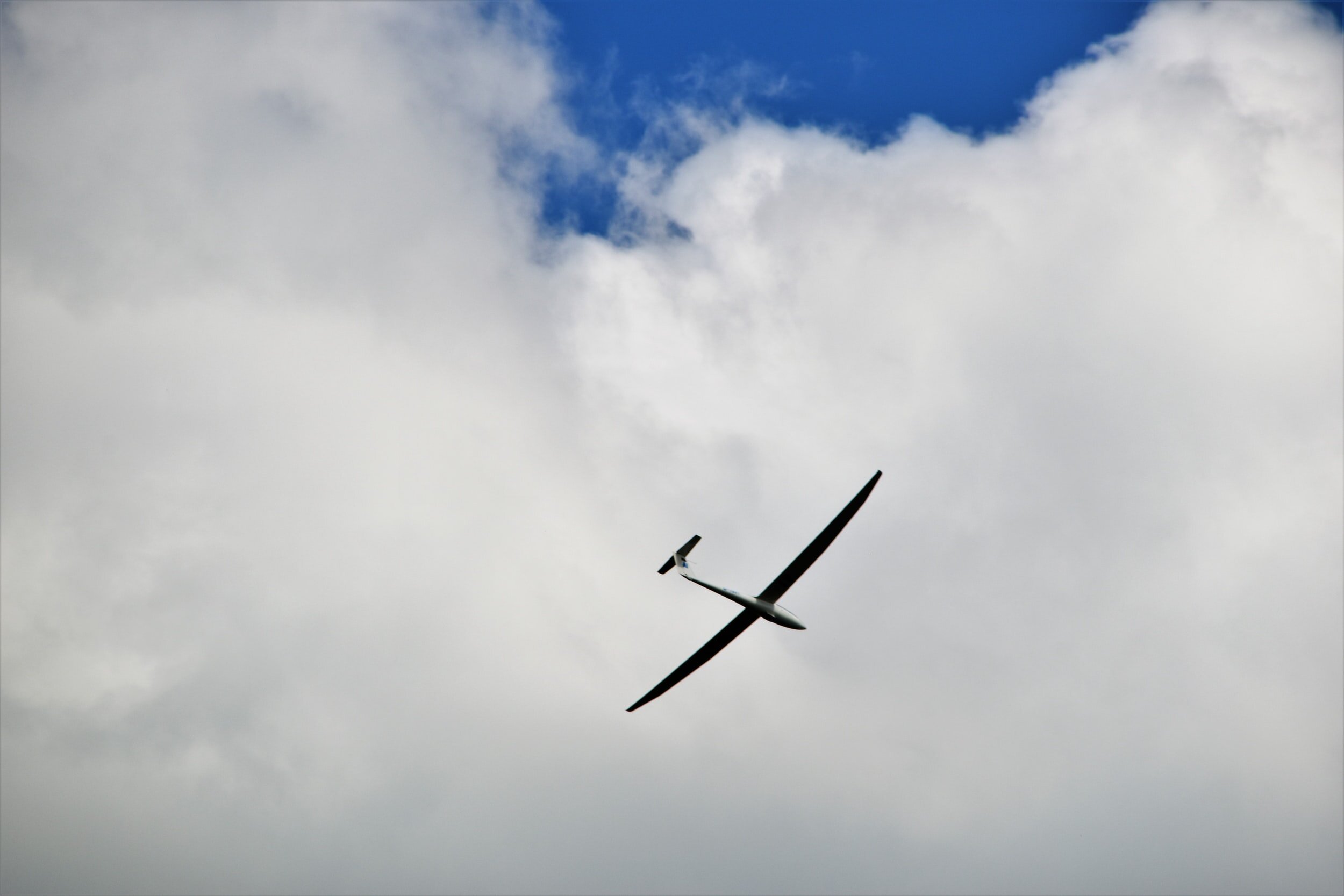
Frequently asked questions.
Gliders don’t have engines. Are they safe?
Yes! Gliders are actually safer than airplanes. Think about it like this: what could possibly go wrong in a glider? You have no engine that could fail and you can't run out of fuel. The pilots who will be flying you during your ride are very experienced and have their commercial rating. So don’t worry! Taking a glider ride at Wurtsboro Airport is as safe (and probably a good deal safer) as driving to the airport.
How does a glider get into the air?
We use historic L-19 "Bird Dog" aircraft to tow our gliders up to an average height of 2500′ (about half a mile) above the ground. The airplanes are connected to the gliders with a tow rope that is made of nylon and rated for twice the weight of the glider. These ropes are inspected every morning before they are used and before every tow.
What time of day is best for taking a glider ride?
Glider rides are given anytime from 9:30 AM to about 4:30 PM. We will sometimes do rides later in the day (as late as 6 PM) on busy weekends in the summer; you would just have to call our office and ask if you wanted to do something that late. The best time for glider rides actually depends on what you want out of the ride.
If you are a bit nervous and/or get motion sick easily, the morning (before 11 AM) or the late afternoon (after 4 PM) is the best time for you. During these parts of the day the air is much more stable, the gliders don’t bounce around, and you have a nice, smooth flight that doesn’t last any longer then about 15 minutes.
If you are an adventurous person, who wants to see how it is possible for gliders to fly for hours on end and go hundreds and thousands of miles, the early afternoon (12 PM – 3:30 PM) gives the best chance of the air mixing vertically (think of it like wind that moves up and down instead of across the ground), allowing us to gain altitude, give longer rides, and show people the true joy of glider flying. These rides typically have some turbulence, and last longer. The weather does have an effect on whether the afternoon provides better flying conditions, but this time frame is still the best chance of good gliding conditions on any day.
I loved it! What does it take to learn to fly a glider?
Time. Money. Dedication. Flying Gliders is not extremely difficult, and can be learned by anyone from age 14-99 (special exceptions for older patrons are available upon request). The most important thing to remember if you are interested in learning to fly gliders is that if you fly infrequently, you will not progress quickly. Flying once a month may sound adequate, but if you only drove a car once a month, how fast would you improve? We recommend flying once a week, and no less then twice a month if you hope to get your glider rating in less than two years. Most people take about 30 sessions at two flights per session to get their rating. This number does vary depending on the person and how fast they learn – it takes less time for some and more for others, but it is a good average.
